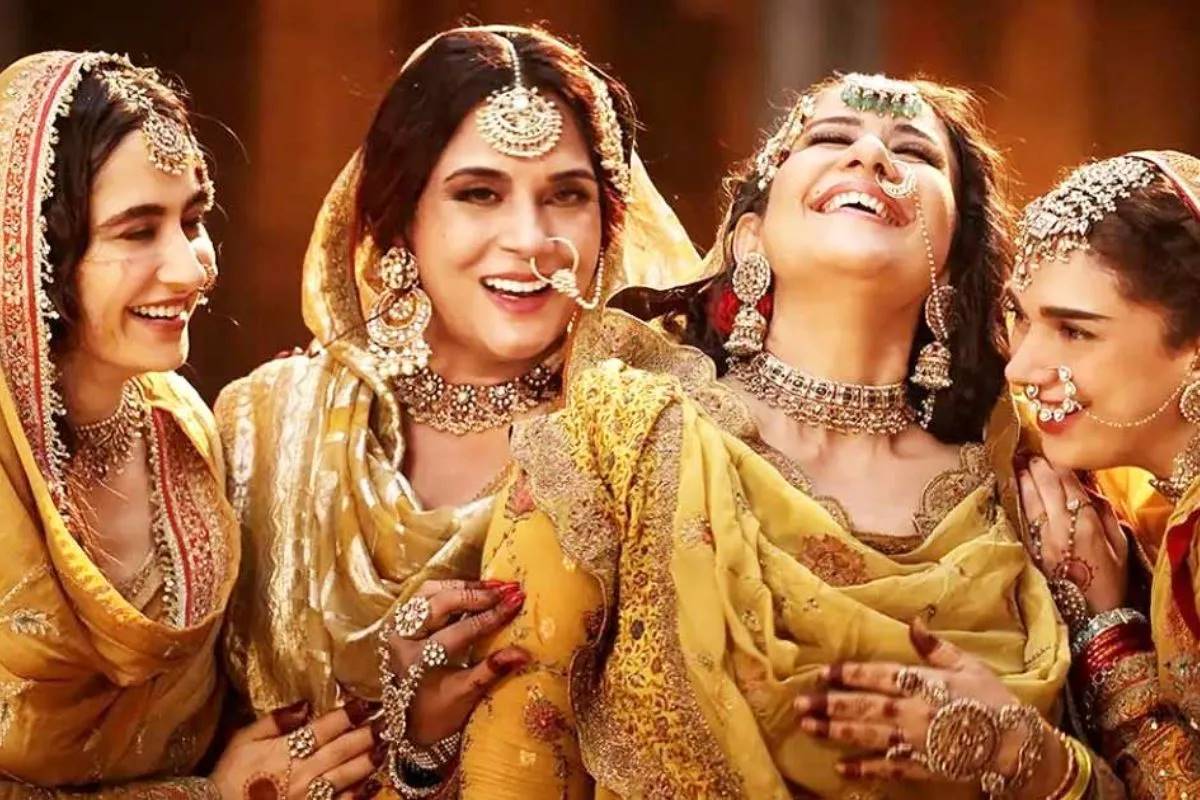Ranbir Kapoor and Vicky Kaushal to lock horns in ‘Love and War’: Report
As per reports, Bhansali's 'Love and War' will feature a high-stakes face-off between Ranbir Kapoor and Vicky Kaushal.
Explore the rise and fall of Lahore’s iconic Heeramandi through history’s lens, from cultural zenith to modern silence.
Aakriti Agarwala | May 3, 2024 8:51 pm

Image Source: Instagram
Heeramandi, known as the ‘red light area’ of Lahore, was once a bustling center of culture, art, and etiquette. As viewers around the world prepare to binge-watch Sanjay Leela Bhansali’s period and prestige TV series, ‘Heeramandi,’ it’s essential to delve into the history of this cultural space to grasp the period aspect of the drama.
When we envision a director capable of capturing legacy, a spectacle of grandeur, culture, art, and royalty in India, our minds invariably turn to Sanjay Leela Bhansali. His extensive repertoire, featuring lavish, larger-than-life films like ‘Devdas,’ ‘Bajirao Mastani,’ and ‘Padmavat,’ now welcomes his OTT debut—a project that has come to fruition more than a decade after its inception by his friend, Moin Beg. The show, released on Netflix on May 1st, comprises 8 episodes generously infused with opulence, flamboyant architecture, and poise.
Advertisement
Heeramandi, translating literally to “diamond market,” is situated in Lahore near the Taxali Gate and Badshahi Mosque. There’s a debate over its naming, with some attributing it to Heera Singh Dogra, son of Dhian Singh Dogra, Prime Minister during Maharaja Ranjit Singh’s reign. Heera Singh envisioned transforming the Shahi Mohalla, near the royal court, into an economic hub that would also house tawaifs, thus giving rise to ‘Heera Singh di mandi.’
Advertisement
During Mughal rule, women artisans from Afghanistan and Uzbekistan were brought to Heeramandi to entertain the royal court. These women were trained in various arts including classical kathak, mujra, thumri, ghazal, and dadra. They epitomized manners, art, and etiquette, akin to royalty. Upon mastering classical dance and singing, they became tawaifs, entertaining royal guests in kothas.
It’s argued that young nawabs were also sent to these kothas to learn Urdu, manners, and etiquette from the tawaifs, a point Bhansali’s drama emphasizes repeatedly.
Tawaifs, though unmarried, engaged in romantic relationships with their patrons. They often served as loyal mistresses, entering and dissolving relationships mutually.
During that era, tawaifs were esteemed entertainers, catering to royalty and nobility.
The Victorian perspective of the British did not afford tawaifs the same respect they once commanded; instead, they were viewed as licentious. Referred to as ‘nautch girls’ by the British, a term believed to stem from the anglicized corruption of the word ‘naach,’ meaning dance, they were not seen as patrons of the tawaifs.
It’s argued that under British rule, brothels and prostitution proliferated, finding space near the Taxali Gate in Heeramandi to entertain British soldiers, who began referring to Heeramandi as ‘Baazar-e-Husn’ (market of beauty). Over time, tawaifs lost the status and respect they once held and were eventually coerced into prostitution.
These tawaifs are believed to have actively participated in the struggle against colonial rule, with those who had amassed wealth providing financial support to anti-British movements. Kothas transformed into clandestine meeting places and hiding spots, while the space came to be categorized as a brothel under British rule.
The institution of the tawaifs persisted until 1947, witnessing the rise of some of the finest artists who became renowned singers, dancers, and actresses, including the celebrated Gauhar Jaan, one of the first singers to record music in India.
Following independence and partition, the tawaif culture faced complete extinction. Influenced by Victorian morality and the evolving values of both nations regarding chastity, tawaifs experienced a decline in their status as artisans, being increasingly equated with courtesans and prostitutes, shaping the modern-day perception of tawaifs.
After partition, the film industry became the primary avenue for tawaifs. Many transitioned into actresses and singers, achieving fame and fortune. Gradually, tawaifs vanished, and kothas ceased to be centers of art and culture, instead becoming associated with pleasure trade.
During Muhammad Zia-ul-Haq’s era, there was a crackdown on music and dance establishments linked to prostitution. Heeramandi, once a hub of art and culture, now stands silent, echoing the lost grandeur of the tawaif culture.
Over time, the space has transformed into a bustling market with shops and restaurants, erasing traces of its cultural past.
Also Read: Richa Chadha’s sehra: A tale of continuity from Wasseypur to Heeramandi
Advertisement
As per reports, Bhansali's 'Love and War' will feature a high-stakes face-off between Ranbir Kapoor and Vicky Kaushal.
Priyanka Chopra's mother, Madhu Chopra breaks silence on Deepika Padukone replacing PeeCee in Bhansali's 'Ram Leela.'
In a previous interivew, Sanjay Leela Bhansali recalled his father being a violent man consumed by alcoholism.
Advertisement
